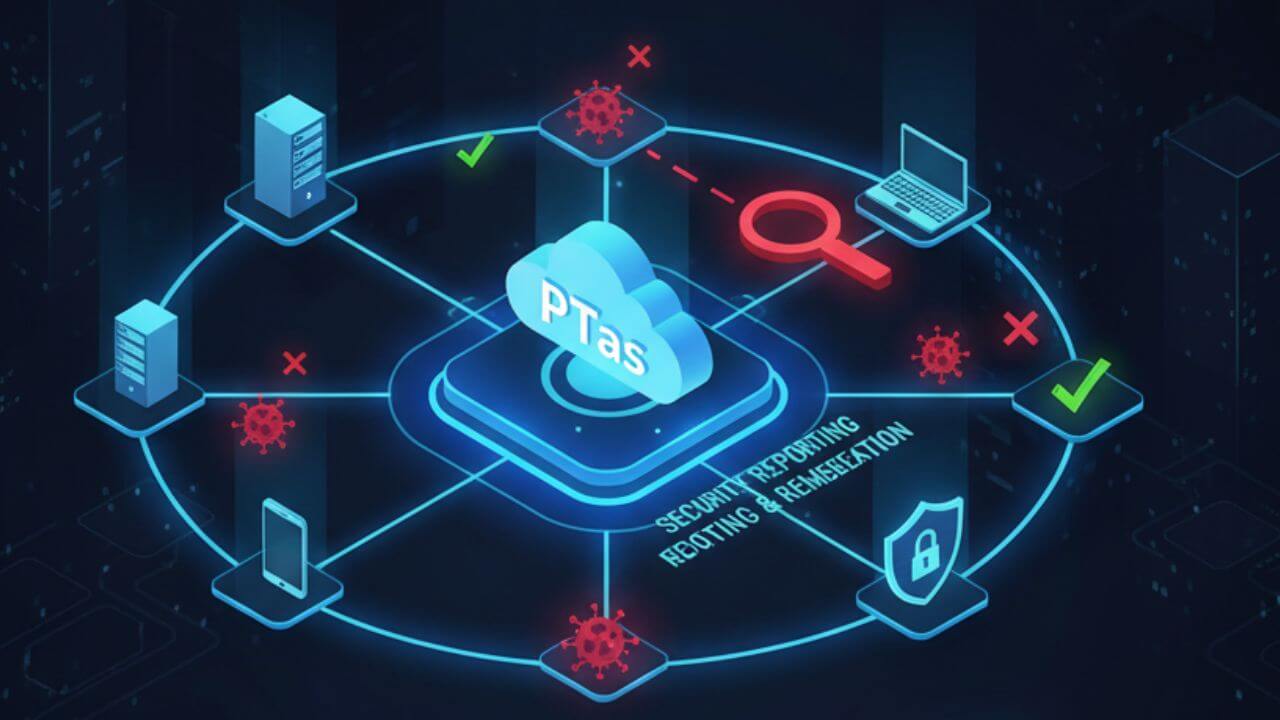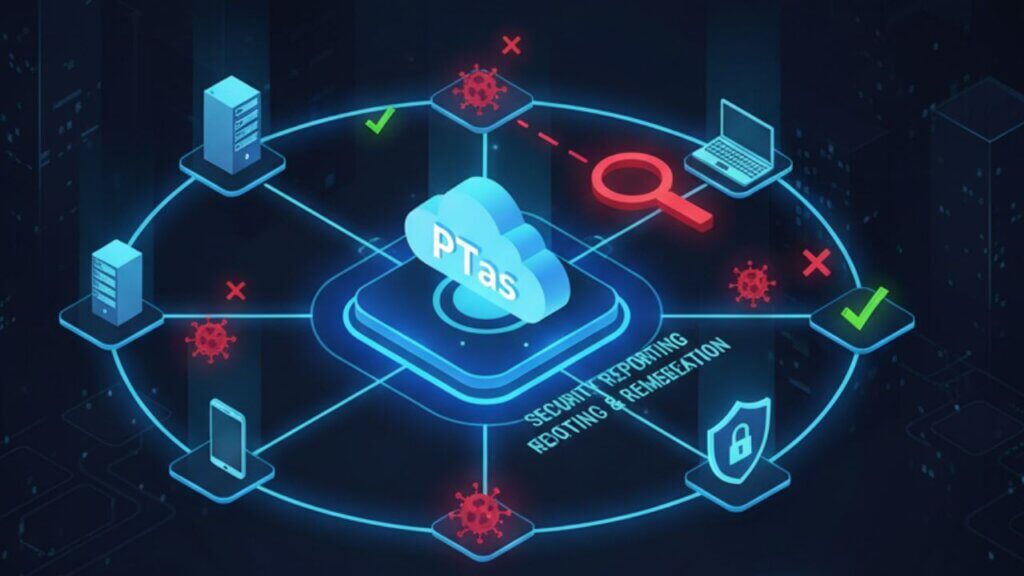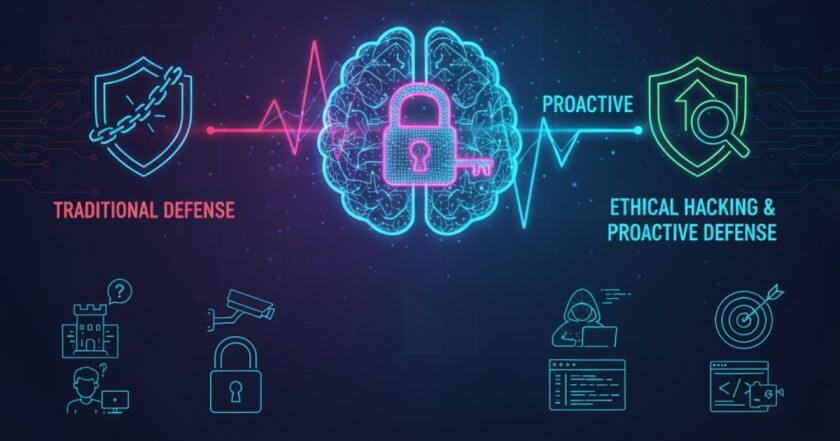Penetration testing as a service lets companies bring in experts who run controlled attacks to spot weak points before real threats strike. This setup avoids the need to assemble an in-house team from the ground up. Costs stay steady, and results arrive faster than with traditional methods. The sections below cover the core ideas, the workflow, and the reasons many teams now rely on this option.
Table of Content
Why Do Businesses Run Security Checks Often?
Data leaks make headlines weekly. One missed setting can expose customer records or halt operations. Paper-based reviews catch policy gaps but skip live dangers. Penetration testing as a service takes a different path. Specialists copy real-world moves fake phishing notes, password trials, or network scans to reveal exactly where protection breaks.
A regional bank learned this firsthand. A tester located an unsecured backup file. The patch took under two hours and blocked a breach that could have cost millions. Without the exercise, the file might have sat exposed for ages. Frequent runs like these shift fuzzy concerns into concrete tasks.
How Does the Process Unfold Step by Step?
Everything starts with a planning call. Both sides settle on targets: specific servers, applications, or cloud accounts. Ground rules follow no harm to live systems, no tests during busy hours. Testers then collect public details, probe for open ports, and sketch the full attack map.
The active stage begins next. Standard tools scan for known issues. Hands-on work follows: building tailored exploits, linking minor bugs into larger problems. One recent job on an e-commerce site turned up a flaw that allowed testers to view order histories. The final report showed replay steps, impact level, and sample code fixes.
A wrap-up session reviews every point. Clients receive a simple overview plus deep technical notes for coders. Follow-up tests prove the changes hold. Most projects finish in two to four weeks, based on size.
What Makes PTaaS Different from Traditional Tests?
Past approaches required booking consultants for a single project every year or two. Thick reports often sat unread until the next cycle. Penetration testing as a service changes that pattern. Users gain constant access via a dashboard. A new vulnerability surfaces? Book a targeted recheck. A fresh feature launches? Scan it right away.
Fees remain fixed per month or per item, not by the hour. A mobile app maker I advised moved to this model and trimmed yearly expenses by 40%. They also shortened repair times because issues appeared live, not in a delayed document.
Which Teams Gain the Most from This Approach?
New companies ship code quickly and fix security later a risky habit. PTaaS supplies high-level reviews without adding staff. Sectors under strict rules, such as banking or medical groups, need proof for standards like PCI-DSS or HIPAA. Reports generate compliance evidence automatically.
Big organizations pair it with their own internal crews. One insurer schedules outside tests four times a year while its staff handles employee-focused scenarios. Together, the duo uncovers more than either side alone.
What Takes Place in a Standard Project?
The first day includes a short meeting. Targets get confirmed: address ranges, permitted windows, contact list for urgent issues. Testers sign confidentiality forms and receive any required logins. Quiet scans start no noise to the operations group unless planned.
By mid-project, deeper probes begin. Phishing drills might send custom messages to measure staff reactions. Office Wi-Fi checks look for unauthorized hotspots if locations are included. Cloud storage rules get examined for loose permissions or public shares.
Near the close, testers push for higher access. Can a small web bug lead to full control? Progress updates appear on a shared screen. Team members follow along and raise questions without waiting for a final file.
How Do Groups Address Problems After the Run?
Reports rank items by business effect, not just technical score. A moderate web login issue that faces customers moves to the front. Each entry lists:
- Working example code
- Screen captures or clips
- Clear repair instructions
- Confirmation steps for recheck
Coders copy the setup to a test area, apply the change, and flag it done. The system schedules a fresh scan. Most critical items close within a month.
Which Tools Drive These Platforms Today?
Free tools handle routine jobs. Custom code covers unique cases API stress tests or cloud policy reviews. A central panel ties it all together. Leaders view trend lines; technicians access raw data.
Links to existing systems matter. Issues create tickets in tracking tools without manual entry. Some setups connect to alert systems for instant follow-up scans. The aim: fold security into daily development, not a side task.
What Are Typical Costs for Penetration Testing as a Service?
Prices depend on asset numbers and test cadence. A small online service with one public site might spend $1,500 monthly for unlimited focused runs. Large networks with many segments often sign yearly deals over $100,000. Either figure beats paying a full-time specialist $120,000 plus equipment.
Extra savings appear over time. Quick repairs limit outages. Rule checks become standard, not emergencies. Some insurers cut rates for proven testing routines.
Which Errors Should Teams Watch For?
Unclear scope drains funds. Settle limits early internal systems or only public faces? Ignoring rechecks leaves gaps. One company fixed a database issue but overlooked a parallel flaw nearby.
Poor explanations stall fixes. When coders miss the stakes, items linger. Hold short walkthroughs with live examples. View testers as allies, not critics.
How Do Companies Pick a Solid Provider?
Demand sample outputs: short summary, full technical pack, source files. Inquire about tester credentials practical certificates show real ability. Confirm they use established guides like OWASP or PTES.
Short trials build trust. Many providers offer a single-target review to demonstrate results. Study past reports for plain writing. Warning signs: hidden fees, no recheck option, or claims of perfect systems.
Which Shifts Are Shaping PTaaS Ahead?
Automated scans expand. Smart filters spot odd patterns for expert follow-up. Ongoing checks review new code as it lands. Mixed programs invite outside researchers for rare finds.
New laws drive demand. Global privacy rules and disclosure mandates require evidence of effort. Leadership now tracks security metrics beside sales figures. The change looks lasting.
Ready to Strong Your Security Posture?
Penetration testing as a service supplies focused, repeatable checks without heavy overhead. Groups that once tested yearly now run scans after each major update. The payoff: fewer shocks, quicker responses, and solid assurance that safeguards match current risks.
Begin modestly. List your key systems, then arrange a limited trial. Review results as a team. Most spot fast improvements that cover costs in months. Security is an ongoing practice, and PTaaS keeps that practice practical.
Want to Stay Ahead of Attackers? Read These Next:
- DevSecOps Best Practices: Integrating Security Early in Your CI/CD Pipeline
- 5 Cloud Misconfigurations That Lead to Data Breaches
- How Can Ethical Hacking Training Elevate Your Internal Cybersecurity?
- Top 5 Fileless Remote Access Trojans in 2025
- Top 5 IoT Remote Access Trojans Crippling Devices in 2025
- Top 5 Web-Based Remote Access Trojans That Are Dominating 2025
Why Businesses Trust SecureMyOrg for Comprehensive Network Security
At SecureMyOrg, we uncover and fix all possible security vulnerabilities of mobile and web, while providing solutions to mitigate risks. We are trusted by renowned companies like Yahoo, Gojek and Rippling, and with 100% client satisfaction, you’re in safe hands!







Some of the things people reach out to us for –
- Building their cybersecurity program from scratch – setting up cloud security using cost-effective tools, SIEM for alert monitoring, building policies for the company
- Vulnerability Assessment and Penetration Testing ( VAPT ) – We have certified professionals, with certifications like OSCP, CREST – CPSA & CRT, CKA and CKS
- DevSecOps consulting
- Red Teaming activity
- Regular security audits, before product release
- Full time security engineers.







